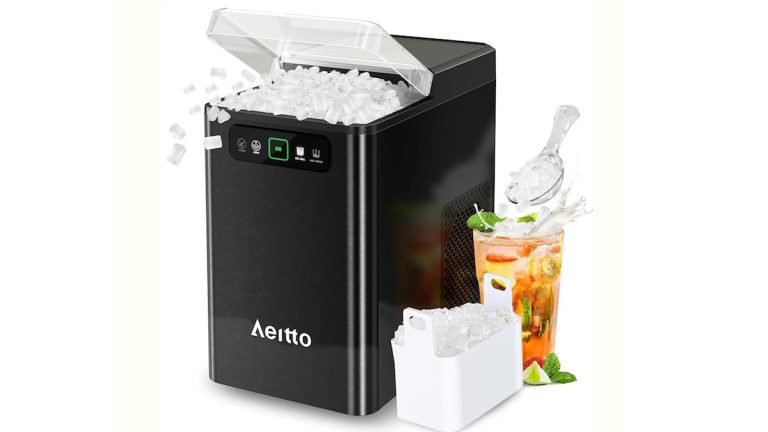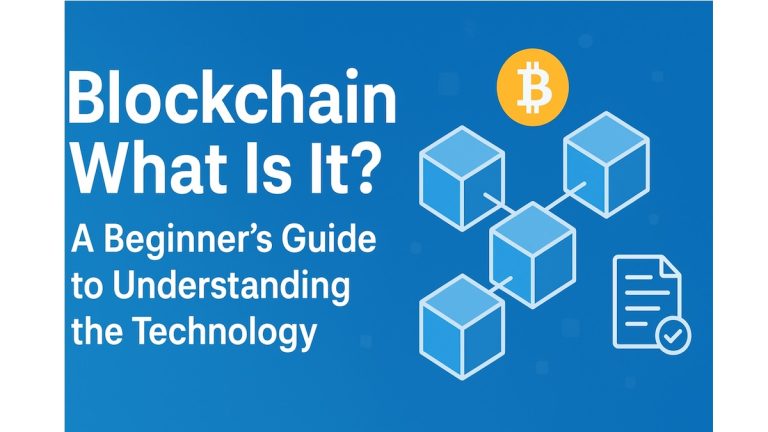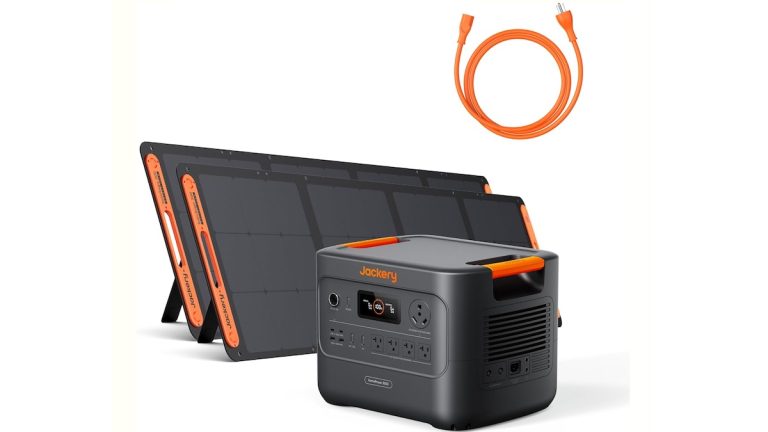The world is quickly embracing blockchain technology — not just for cryptocurrencies like Bitcoin or Ethereum, but for decentralized finance (DeFi), supply chain management, gaming, healthcare, and even government systems. As this demand grows, one role has become especially hot: the Blockchain Developer. How to Become a Blockchain Developer in the big question.

If you’re intrigued by blockchain’s promise and want to be part of this revolution, this comprehensive guide will walk you through who a blockchain developer is, the essential skills you need, the programming languages to master, a beginner-friendly roadmap, and the career opportunities that await you.
Who Is a Blockchain Developer?
A Blockchain Developer is a specialized software engineer who builds and maintains blockchain-based systems and applications. Their main goal is to create secure, decentralized solutions that operate without intermediaries.
Broadly, blockchain developers fall into two main categories:
- Core Blockchain Developers — They design and maintain the architecture of blockchain systems. This includes building consensus mechanisms, node operations, and network protocols.
- Blockchain Software Developers — They build decentralized applications (dApps), smart contracts, and other components that interact with existing blockchains.
In practice, blockchain developers can work in diverse areas:
- Smart Contracts: Writing self-executing code that runs automatically when specific conditions are met.
- dApp Development: Creating decentralized apps that interact with smart contracts.
- Blockchain Infrastructure: Managing nodes, APIs, and backend systems that connect with blockchain networks.
- Security & Auditing: Ensuring smart contracts are bug-free and resistant to vulnerabilities.
- Blockchain Architecture: Designing efficient and scalable blockchain systems or private networks.
In essence, a blockchain developer is part programmer, part architect, part security engineer — all rolled into one.
Must Read : How to Create Quick Logos and Illustrations with Recraft
Skills Every Blockchain Developer Needs
Becoming a blockchain developer requires mastering both foundational computer science concepts and specialized blockchain technologies. Below are the core skill areas every blockchain professional should develop.
1. Strong Programming Foundations
Before diving into blockchain, you must have solid programming knowledge. Learn how to write efficient code, manage memory, and understand algorithms. Focus on:
- Data structures like linked lists, trees, hash maps, and graphs.
- Algorithms for sorting, searching, and optimization.
- Networking basics (P2P connections, APIs).
- Version control (Git/GitHub).
These form the building blocks for blockchain programming.
2. Understanding Cryptography
Blockchain relies heavily on cryptography for security and integrity. Developers must understand:
- Hash Functions (e.g., SHA-256)
- Public and Private Keys
- Digital Signatures
- Encryption vs. Hashing
- Merkle Trees and cryptographic proofs
Advanced developers may explore zero-knowledge proofs, multi-party computation, and threshold cryptography, which are now vital for privacy-focused applications.
Must Read : How to Remove Background from Photos Easily
3. Grasping Blockchain Fundamentals
Understanding the philosophy and mechanics of blockchain is crucial. Learn concepts like:
- How blocks, transactions, and ledgers work
- Consensus mechanisms (Proof of Work, Proof of Stake, Delegated PoS)
- Mining vs. validation
- Gas fees and transaction finality
- Forks, sidechains, and Layer-2 solutions
Read the Bitcoin and Ethereum whitepapers — they’re the foundational texts of blockchain knowledge.
4. Smart Contract Development
Smart contracts are the backbone of decentralized apps. Learn how to:
- Write, test, and deploy smart contracts using Solidity (Ethereum) or Rust (Solana/Polkadot).
- Understand contract life cycles and gas optimization.
- Handle common vulnerabilities like reentrancy attacks, integer overflows, and front-running.
5. Familiarity with Blockchain Tools & Frameworks
Practical knowledge of development tools speeds up your workflow:
- Hardhat / Truffle for contract deployment and testing.
- Ganache for local Ethereum simulation.
- Metamask for wallet and transaction testing.
- Remix IDE for quick Solidity development.
- Web3.js / Ethers.js for dApp integration.
6. Security Awareness
Blockchain is immutable — once deployed, a bug can cost millions. Security is therefore a must-have skill. Learn:
- Common vulnerabilities and attack patterns.
- Smart contract auditing techniques.
- Secure coding standards.
- Static analysis and auditing tools (e.g., MythX, Slither).
- Using trusted libraries like OpenZeppelin.
7. Soft Skills & Continuous Learning
Finally, blockchain developers need curiosity and adaptability. The ecosystem changes rapidly, with new frameworks and protocols emerging every few months. Strong communication skills, problem-solving ability, and a collaborative mindset are essential for thriving in open-source, decentralized communities.
Blockchain Programming Languages to Learn
Different blockchains use different languages, so your learning path depends on which ecosystem you want to work in. Here’s a rundown of the most valuable ones:
| Language | Primary Use |
|---|---|
| Solidity | The go-to language for writing smart contracts on Ethereum and EVM-compatible chains like Polygon, BNB Chain, Avalanche. |
| Vyper | A secure, Python-like language for Ethereum smart contracts. Great for simple, verifiable code. |
| Rust | Used for high-performance blockchains like Solana, Polkadot, and NEAR. Offers safety and speed. |
| Go (Golang) | Used for building blockchain nodes and infrastructure (e.g., Hyperledger Fabric, Cosmos SDK). |
| JavaScript / TypeScript | Essential for dApp front-end and back-end integration via libraries like Web3.js or Ethers.js. |
| Python | Ideal for blockchain scripting, data analytics, and automation. Some blockchains support smart contracts in Python too. |
| C++ / Java | Common in blockchain core development and legacy systems (Bitcoin is written in C++). |
Pro Tip: Start with Solidity if your goal is to build dApps or DeFi projects, then branch out into Rust or Go as you gain experience.
Step-by-Step Roadmap for Beginners
Let’s outline a clear path to becoming a blockchain developer — from zero experience to job-ready.
Step 1: Master General Programming
Start by learning a mainstream language like Python or JavaScript. Practice solving algorithmic problems and build small web apps. This foundation will make blockchain concepts much easier to grasp.
Step 2: Learn Blockchain Fundamentals
Once you’re comfortable with programming, dive into blockchain theory. Study:
- How transactions work
- Block creation and validation
- Consensus algorithms (PoW, PoS, PBFT)
- Hashing and encryption
- Public and private keys
- Tokenization and smart contracts
You can take free courses from Coursera, Udemy, or Ethereum.org to build this foundation.
Step 3: Build a Simple Blockchain
One of the best ways to understand blockchain is to build one. Try creating a minimal blockchain in Python or JavaScript. Implement features like:
- Adding transactions
- Mining new blocks
- Hashing and verification
- Chain validation
This hands-on exercise helps you internalize how blockchains really work.
Step 4: Learn Smart Contract Development
Now move to Solidity (or Rust if you’re targeting Solana). Learn by doing:
- Write simple contracts like “Hello Blockchain” or an ERC-20 token.
- Experiment with Remix IDE and MetaMask.
- Deploy to Ethereum testnets (Goerli, Sepolia).
Once you’re confident, start using advanced frameworks like Hardhat or Truffle for testing and deployment.
Step 5: Explore dApp Development
Learn to build decentralized apps that interact with your contracts. For this, you’ll need:
- Frontend: React.js, HTML, CSS.
- Blockchain interaction: Web3.js or Ethers.js.
- Backend (optional): Node.js, Express, or any REST API.
This combination makes you a full-stack blockchain developer — a highly in-demand skillset.
Step 6: Understand Blockchain Security
Next, study common vulnerabilities like reentrancy and integer overflows. Use auditing tools to check your code. Always follow community-approved practices and use libraries like OpenZeppelin for safety.
Step 7: Contribute to Open Source
Join communities on GitHub, Discord, or Reddit. Contribute to open-source blockchain projects or participate in hackathons. This is where you learn from real developers and get noticed by potential employers.
Step 8: Build a Portfolio
Showcase your skills with projects such as:
- A decentralized voting app
- A token launch platform
- NFT minting dApp
- A decentralized exchange (DEX) simulator
Document everything on GitHub and write short blog posts explaining what you built — it boosts visibility and credibility.
Step 9: Apply for Internships and Jobs
Start with entry-level blockchain developer or smart contract developer roles. Highlight your projects, GitHub contributions, and problem-solving skills. Companies value practical knowledge more than certificates.
If you prefer flexibility, explore freelancing on platforms like Upwork or Toptal, or join DAOs (Decentralized Autonomous Organizations) for collaborative work.
Career Opportunities and Salaries
Now let’s explore what your career might look like — and how much you can earn as a blockchain developer.
Common Job Roles
- Smart Contract Developer: Specializes in writing and auditing smart contracts.
- Blockchain Engineer: Works on the underlying architecture, nodes, and consensus algorithms.
- dApp Developer: Builds user-facing decentralized applications.
- Blockchain Architect: Designs and implements end-to-end blockchain systems.
- Security Auditor: Reviews code to detect vulnerabilities and ensure reliability.
- Blockchain Consultant: Helps businesses integrate blockchain solutions.
Average Salaries
Salary levels vary by location, experience, and blockchain ecosystem. Here’s a general overview:
In India
- Entry-level (0–1 year): ₹3 – ₹6 LPA
- Mid-level (2–5 years): ₹6 – ₹15 LPA
- Senior (5+ years): ₹15 – ₹30+ LPA
Experienced blockchain security specialists or smart contract auditors can earn significantly more, especially in DeFi startups.
Globally
- Junior Developer: $70,000 – $100,000 per year
- Mid-level Developer: $100,000 – $150,000
- Senior Developer / Auditor: $150,000 – $200,000+
Freelancers and consultants can earn anywhere from $50–200 per hour, depending on expertise and reputation.
Factors That Influence Salary
- Experience and Project Portfolio — Proven, audited projects matter more than degrees.
- Ecosystem Expertise — Solidity and Rust developers are particularly in demand.
- Security Skills — Auditors and researchers command premium rates.
- Open Source Contributions — Building or contributing to reputable projects increases visibility.
- Remote Work — Developers who work for global companies often earn 2–3x more than local rates.
Future Growth Prospects
The blockchain industry is still in its early stages. As Web3, DeFi, NFTs, and enterprise blockchain adoption expand, so will the demand for skilled developers. Major corporations like IBM, ConsenSys, Coinbase, Polygon, and Chainlink are hiring actively, and thousands of startups are entering the market every year.
New trends like AI + Blockchain, Decentralized Identity, and Layer-2 rollups will also open fresh job categories. For developers who continuously learn and adapt, the growth potential is enormous.
Final Thoughts
Becoming a blockchain developer in 2025 isn’t just about learning to code — it’s about joining a movement that redefines how trust and value flow across the internet. The field rewards curiosity, experimentation, and continuous learning.
Start small. Write your first smart contract. Deploy it to a testnet. Contribute to a GitHub repo. Every step brings you closer to mastering one of the most exciting technologies of our time.
If you stay consistent, build real projects, and engage with the community, your journey from beginner to blockchain professional will be faster — and more rewarding — than you imagine.
In short:
👉 Learn programming → Understand blockchain → Master Solidity → Build projects → Focus on security → Contribute → Get hired.
The future is decentralized — and as a blockchain developer, you’ll be one of the builders shaping it.








